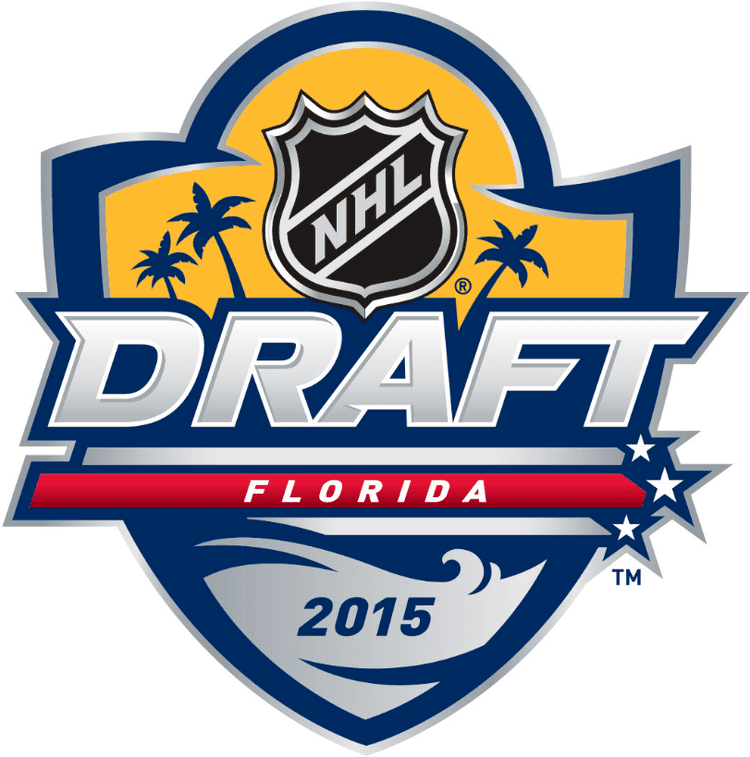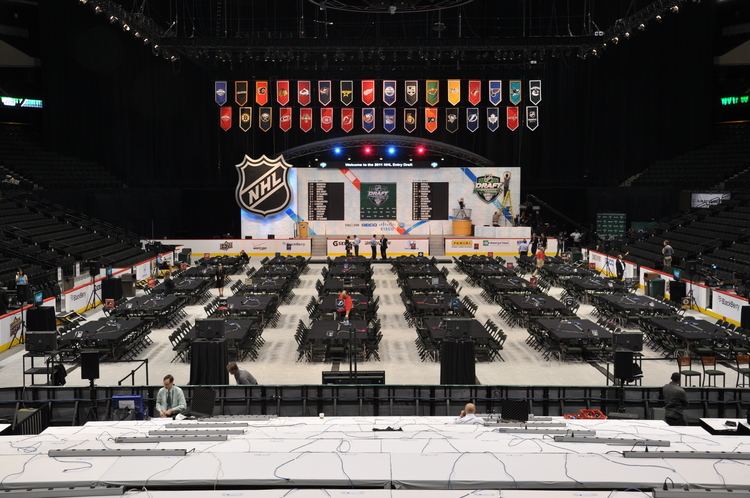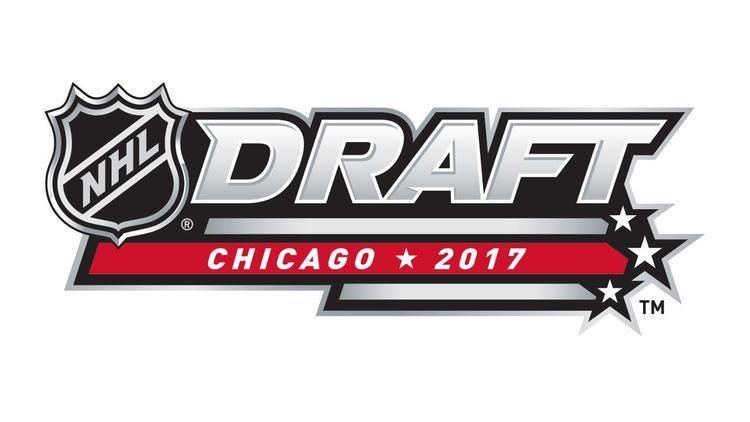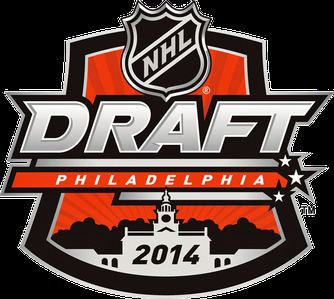 | ||
2016 nhl entry draft full show round 1 6 24 16
The NHL Entry Draft (French: Repêchage d'entrée dans la LNH) is an annual meeting in which every franchise of the National Hockey League (NHL) systematically select the rights to available amateur ice hockey players who meet draft eligibility requirements (North American players 18–20 years old and Europeans of all ages entering the league for the first time, all others enter league as unrestricted free agents). The NHL Entry Draft is held once every year, generally within two to three months after the conclusion of the previous season. During the draft, teams take turns selecting amateur players from junior, collegiate, or European leagues.
Contents
- 2016 nhl entry draft full show round 1 6 24 16
- Toronto maple leafs select auston matthews 2016 nhl entry draft
- History
- Selection order and draft lottery
- Draft lottery
- Eligible players
- References

The first draft was held in 1963, and has been held every year since. The NHL Entry Draft was known as the NHL Amateur Draft until 1979. The entry draft has only been a public event since 1980, and a televised event since 1984. Up to 1994, the order was solely determined by the standings at the end of the regular season. In 1995, the NHL Draft Lottery was introduced where only teams who had missed the playoffs could participate. The one lottery winner would move up the draft order a maximum of four places, meaning only the top five-placed teams could pick first in the draft, and no team in the non-playoff group could move down more than one place. The chances of winning the lottery were weighted towards the teams at the bottom of the regular season standings. Beginning in 2013, the limit of moving up a maximum of four places in the draft order was eliminated, so the lottery winner would automatically receive the first overall pick, and any teams above it in the draft order would still move down one spot.

Toronto maple leafs select auston matthews 2016 nhl entry draft
History

The first NHL Entry Draft (at that time known as the "NHL Amateur Draft") was held on June 5, 1963 at the Queen Elizabeth Hotel in Montreal, Quebec. Any amateur player under the age of 20 was eligible to be drafted. In 1979, the rules were changed allowing players who had previously played professionally to be drafted. This rule change was made to facilitate the absorption of players from the defunct World Hockey Association. Consequently, the name of the draft was changed from "NHL Amateur Draft" to "NHL Entry Draft". Beginning in 1980, any player who is between the ages of 18 and 20 is eligible to be drafted. In addition, any non-North American player over the age of 20 can be selected. From 1987 through 1991, 18 and 19-year-old players could only be drafted in the first three rounds unless they met another criterion of experience which required them to have played in major junior, U.S. college and high school, or European hockey.

In 1980, the Entry Draft became a public event, and was held at the Montreal Forum. Prior to that year the Entry Draft was conducted in Montreal hotels or league offices and was closed to the general public. The first draft outside of Montreal was held at the Metro Toronto Convention Centre in Toronto, Ontario, in 1985. Live television coverage of the draft began in 1984 when the Canadian Broadcasting Corporation covered the event in both English and French for Canadian audiences. The 1987 Entry Draft, held at Joe Louis Arena in Detroit, Michigan, was the first NHL Draft to be held in the United States. SportsChannel America began covering the event in the United States in 1989.

Prior to the development of the Draft, NHL teams sponsored junior teams, and signed prospects in their teens to the junior teams. Players were signed to one of three forms: the "A" form, which committed a player to a tryout; a "B" form, which gave the team an option to sign a player in return for a bonus; and the "C" form, which committed a player's professional rights. The "C" form could only be signed by the player at age eighteen or by the player's parents, often in exchange for some signing bonus. The first drafts (up until the 1968 Amateur Draft) were held to assign players who had not signed with an NHL organization before the sponsorship of junior teams was discontinued after 1968.
Selection order and draft lottery

The selection order in the NHL Entry Draft is determined by a combination of lottery, regular season standing, and playoff results. While teams are permitted to trade draft picks both during the draft and prior to it (sometimes several years prior), in all cases, the selection order of the draft picks is based on the original holder of the pick, not a team which may have acquired the pick via a trade or other means. The order of picks discussed in this section always references the original team.
The basic order of the NHL Entry Draft is determined based on the standings of the teams in the previous season. As with the other major sports leagues, the basic draft order is intended to favour the teams with the weakest performance who presumably need the most improvement in their roster to compete with the other teams. Subject to the results of the NHL Draft Lottery (discussed below), the teams pick in the same order each round, with each team getting one pick per round. The basic order of the picks is determined as follows:
- The teams that did not qualify for the playoffs the previous season (picks 1–15)
- The teams that made the playoffs in the previous season but did not win either their division in the regular season or play in the Conference Finals (picks 16–23 up to 27)
- The teams that won their divisions in the previous season but did not play in the Conference Finals (potentially picks 24–27)
- The teams that lose in Conference Finals (picks 28 and 29)
- The team that was the runner-up in the Stanley Cup Finals (pick 30)
- The team that won the Stanley Cup in the previous season (pick 31)
The number of teams in the second and third group depends on whether the Conference finalists also won their division. The teams in each group (other than the Stanley Cup winner and runner up) are ordered within that group based on their point totals in the preceding regular season (with the lowest point total picking first). Tie-breakers are governed by the same rules used to determine ties in the regular season standings. The order of picks 1–15 may change during the first round of the draft based on the results of the NHL Draft lottery. In the subsequent rounds, the basic order based on point totals is used.
When teams lose their rights to a first-round draft choice, because that player was not signed to a contract and consequently re-entered the entry draft or became an unrestricted free agent, they are awarded a compensatory draft pick. This selection will be the same numerical choice as the first round draft pick who was not signed, but in the second round. For example, if a team cannot sign the seventh overall first round draft choice, it will receive the seventh pick in the second round of the next draft as compensation.
Draft lottery
At the conclusion of the regular season, the 15 teams that did not qualify for the playoffs are entered in a weighted lottery to determine the initial draft picks in the first round. The teams are seeded in the basic draft order based on their regular season point totals. The odds of winning the lottery are weighted on a descending scale that gives the greatest chance of winning to the team with the lowest point total (20%), and the worst chance to the team with the highest point total (1%).
The prize for winning the draft lottery is to be upgraded to pick first in the first round of the draft, with each team that preceded the winner in the basic draft order bumped one pick lower. For example, if the team with the 5th worst point total wins the lottery, it would pick first, and the teams with the worst through 4th-worst records would pick second through fifth. The remaining teams would be unaffected. The teams would return to the basic order for the second and all subsequent rounds.
From its inception until 2015, there was one winner for the lottery, who would win the first pick in the draft. Beginning with the 2016 draft, three winners are picked in the lottery. These teams win the first three picks in the lottery, with the remaining teams dropping as many as three places from their spot in the basic order.
The NHL Draft Lottery takes place during the Stanley Cup playoffs and is hosted at Sportsnet's studios in Toronto from 2015 onwards. From 2006 to 2014, the draft lottery took place at TSN's studios in Toronto.
Eligible players
All players who will be 18 years old on or before September 15 and not older than 20 years old before December 31 of the draft year are eligible for selection for that year's NHL Entry Draft. In addition, non-North American players over the age of 20 are eligible.
